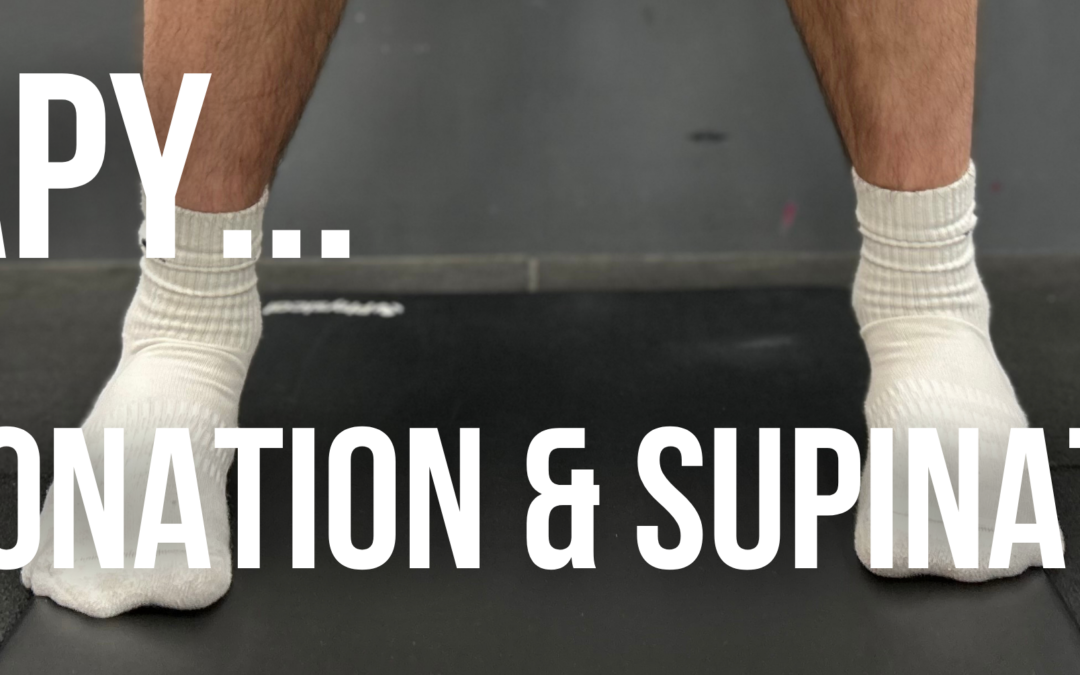Pronation:
Pronation refers to the way in which your foot rolls upon landing, for instance when you first plant your foot to the floor when running. The reason for this is to assist in impact distribution amongst the foot. It’s part of the natural movement of the body but it differs from person to person. As your foot strikes the ground it rolls inward to absorb the shock.
Overpronation describes a movement and happens when your gait (the way you walk or run) causes the arches of your feet to flatten more than they would normally. The result of this is that it puts more strain on the muscles, tendons and ligaments that support your arches. Overpronation increases the risk of injury to your foot and leg. The best course of treatment to correct the problem is with exercises to help strengthen the arch and by introducing orthotic insoles to your shoes.
The soles of your shoes may be the first clue as to whether you overpronate during your gait. If the shoes are more worn on the inside of the arch and underneath the big toes, then this would suggest you do.
Conditions Linked with Over-Pronation:
- Achilles tendinitis: This happens when you put stress on your Achilles tendon.
- Bunions: Bunions are painful bony lumps on the outside of your big toe.
- Heel pain: You can have pain behind, beneath or within your heel bone.
- Iliotibial band syndrome: This is inflammation of a ligament on the outside of your knee.
- Plantar fasciitis: Your plantar fascia is the tendon that stretches from your heel to your toe.
- Shin splints: This is a common injury caused by overuse.
- Hip pain: Overpronation may make your hips hurt.
- Knee pain: You can develop knee pain if you have overpronation.
- Back pain: Sometimes, overpronation causes back pain.



Supination:
Supination is the opposite of pronation and refers to when the foot rolls onto the outer edges of itself. This usually occurs naturally during the push-off phase of running gait (how we run) when the heel raises, and the front of the foot/toes is used to propel the body forward.
Excessive supination (also known as underpronation) is when too much weight is shifted onto the edges of the feet. This causes large amounts of stress to the lateral (outer) ankle. Consequently, putting ligaments such as the anterior talofibular ligament and calcaneofibular ligament at high risk of injury. Excessive supination is less common than overpronation, but is often caused by genetics (i.e., leg length, ankle stability and foot width), incorrect footwear, body misalignment and previous injury.
Like overpronation, the type of shoes you wear can be a big indicator of excessive supination during gait. If they are too chunky around the inner arches and/or allow the edge of the foot to slip over the sole, you may be excessively supinating when you walk.
Conditions Linked with Excessive Supination:
- Lateral ankle sprains: Large amounts of stress caused by more weight on one side of the foot
- Calluses/bunions on outer edge of foot: Bunions are painful bony lumps.
- Clawed toes: Toes bent into abnormal “claw” position.
- Iliotibial band syndrome: This is inflammation of a ligament on the outside of your knee.
- Plantar fasciitis: Your plantar fascia is the tendon that stretches from your heel to your toe.
- Shin splints: This is a common injury caused by overuse.
- Stress fractures: Tiny cracks in bone caused by repetitive force.
If you think you are struggling with any of the things above, please speak to the therapy team. The therapy team can analyse your gait and footwear to identify the exact problem. Then, the team can prescribe you exercises and/or change in footwear to help with the problem.

